Bundle: Chemistry in Focus, Loose-leaf Version, 7th + OWLv2, 1 term (6 months) Printed Access Card
7th Edition
ISBN: 9781337812269
Author: Nivaldo J. Tro
Publisher: Cengage Learning
expand_more
expand_more
format_list_bulleted
Question
Chapter 11, Problem 34E
Interpretation Introduction
Interpretation:
The result of CFC ban on the Antarctic ozone hole is to be explained.
Concept Introduction:
HCFCs and CFCs are a class of inert compounds of carbon, chlorine, and fluorine. They are quite useful for many applications but the inertness of CFCs has an environmental effect. It made a hole in the ozone layer, which was the biggest environmental concern. Hence, it was banned in 1978.
Expert Solution & Answer
Want to see the full answer?
Check out a sample textbook solution
Students have asked these similar questions
Explain the relevance of the 1987 Montreal Protocol and its 2016 Kigali Amendment on regulating ozone depletion.
Why chlorofluorocarbons (CFCs) are responsible for destroying ozone ?
How CFCs break the ozone layer?
Chapter 11 Solutions
Bundle: Chemistry in Focus, Loose-leaf Version, 7th + OWLv2, 1 term (6 months) Printed Access Card
Ch. 11 - Prob. 11.1YTCh. 11 - A balloon has an initial temperature of 30.0C and...Ch. 11 - Prob. 11.3YTCh. 11 - Prob. 1SCCh. 11 - Prob. 2SCCh. 11 - Prob. 3SCCh. 11 - Prob. 1ECh. 11 - Prob. 2ECh. 11 - Prob. 3ECh. 11 - Prob. 4E
Ch. 11 - Prob. 5ECh. 11 - Prob. 6ECh. 11 - Prob. 7ECh. 11 - Prob. 8ECh. 11 - Prob. 9ECh. 11 - Prob. 10ECh. 11 - Prob. 11ECh. 11 - Prob. 12ECh. 11 - Why is oxygen central to the existence of animal...Ch. 11 - Prob. 14ECh. 11 - Prob. 15ECh. 11 - Prob. 16ECh. 11 - Prob. 17ECh. 11 - Prob. 18ECh. 11 - Prob. 19ECh. 11 - What are the adverse health and environmental...Ch. 11 - Prob. 21ECh. 11 - Prob. 22ECh. 11 - Prob. 23ECh. 11 - Prob. 24ECh. 11 - With the help of chemical equations, explain how...Ch. 11 - Prob. 26ECh. 11 - Prob. 27ECh. 11 - Why does ozone deplete severely over Antarctica...Ch. 11 - Has ozone been depleted over other areas of the...Ch. 11 - Prob. 30ECh. 11 - Prob. 31ECh. 11 - Prob. 32ECh. 11 - Prob. 33ECh. 11 - Prob. 34ECh. 11 - Prob. 35ECh. 11 - Prob. 36ECh. 11 - The pressure on Mt. Everest is approximately 0.31...Ch. 11 - Prob. 38ECh. 11 - Prob. 39ECh. 11 - The pressure in Denver, Colorado, is approximately...Ch. 11 - Prob. 41ECh. 11 - Prob. 42ECh. 11 - Jet airplanes often fly in the lower stratosphere,...Ch. 11 - Prob. 44ECh. 11 - Prob. 45ECh. 11 - Prob. 46ECh. 11 - Prob. 47ECh. 11 - A 2.8 L balloon is warmed over a toaster, and its...Ch. 11 - A cylinder with a movable piston has an initial...Ch. 11 - Prob. 50ECh. 11 - Prob. 51ECh. 11 - Prob. 52ECh. 11 - Prob. 53ECh. 11 - Prob. 54ECh. 11 - Explain the difference between the effects of...Ch. 11 - Prob. 58ECh. 11 - Prob. 59ECh. 11 - Prob. 60E
Knowledge Booster
Similar questions
- Explain the difference between the effects of ground- level ozone and stratospheric ozone. Why is one beneficial to human life, whereas the other is not?arrow_forwardWhy does ozone deplete severely over Antarctica each October, but not over other areas of the planet?arrow_forwardThe following are Federal Air Quality Standards for the US CO: 35ppm (1-hour) NO2: 0.053ppm (Actually NOx but please use NO2 to calculate) 03: 0.075 ppm SO2: 75ppb (1-hour) a) Calculate the air concentrations in ug/m³ corresponding to the standards. Detail your calculations. b) What would be the mass concentrations on Mars if the little green men would apply the same standards in terms of mixing ratio. Explain your assumptions.arrow_forward
arrow_back_ios
arrow_forward_ios
Recommended textbooks for you
 Chemistry: Matter and ChangeChemistryISBN:9780078746376Author:Dinah Zike, Laurel Dingrando, Nicholas Hainen, Cheryl WistromPublisher:Glencoe/McGraw-Hill School Pub Co
Chemistry: Matter and ChangeChemistryISBN:9780078746376Author:Dinah Zike, Laurel Dingrando, Nicholas Hainen, Cheryl WistromPublisher:Glencoe/McGraw-Hill School Pub Co Chemistry for Engineering StudentsChemistryISBN:9781285199023Author:Lawrence S. Brown, Tom HolmePublisher:Cengage Learning
Chemistry for Engineering StudentsChemistryISBN:9781285199023Author:Lawrence S. Brown, Tom HolmePublisher:Cengage Learning Chemistry: The Molecular ScienceChemistryISBN:9781285199047Author:John W. Moore, Conrad L. StanitskiPublisher:Cengage Learning
Chemistry: The Molecular ScienceChemistryISBN:9781285199047Author:John W. Moore, Conrad L. StanitskiPublisher:Cengage Learning Chemistry for Engineering StudentsChemistryISBN:9781337398909Author:Lawrence S. Brown, Tom HolmePublisher:Cengage Learning
Chemistry for Engineering StudentsChemistryISBN:9781337398909Author:Lawrence S. Brown, Tom HolmePublisher:Cengage Learning


Chemistry: Matter and Change
Chemistry
ISBN:9780078746376
Author:Dinah Zike, Laurel Dingrando, Nicholas Hainen, Cheryl Wistrom
Publisher:Glencoe/McGraw-Hill School Pub Co

Chemistry for Engineering Students
Chemistry
ISBN:9781285199023
Author:Lawrence S. Brown, Tom Holme
Publisher:Cengage Learning

Chemistry: The Molecular Science
Chemistry
ISBN:9781285199047
Author:John W. Moore, Conrad L. Stanitski
Publisher:Cengage Learning

Chemistry for Engineering Students
Chemistry
ISBN:9781337398909
Author:Lawrence S. Brown, Tom Holme
Publisher:Cengage Learning